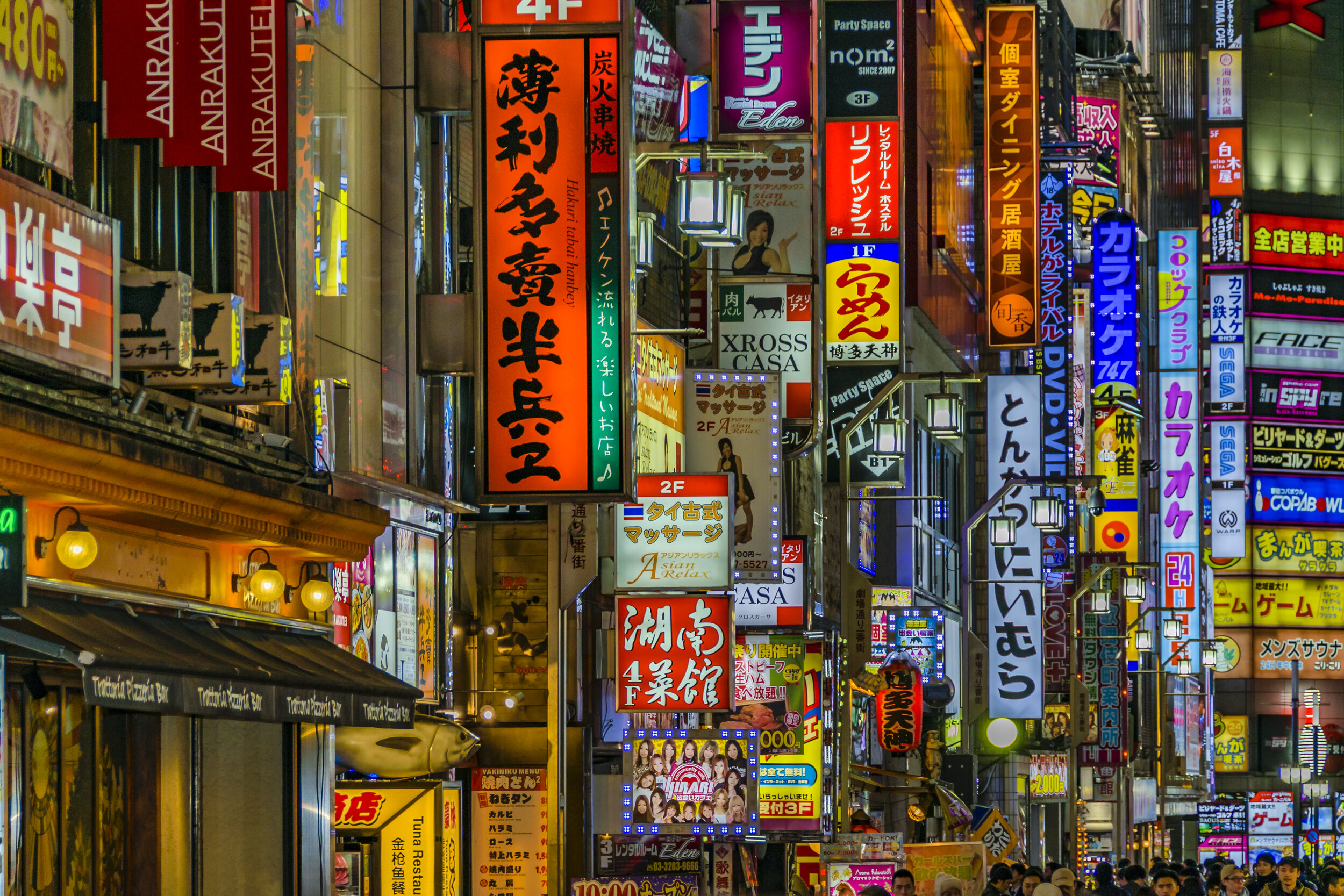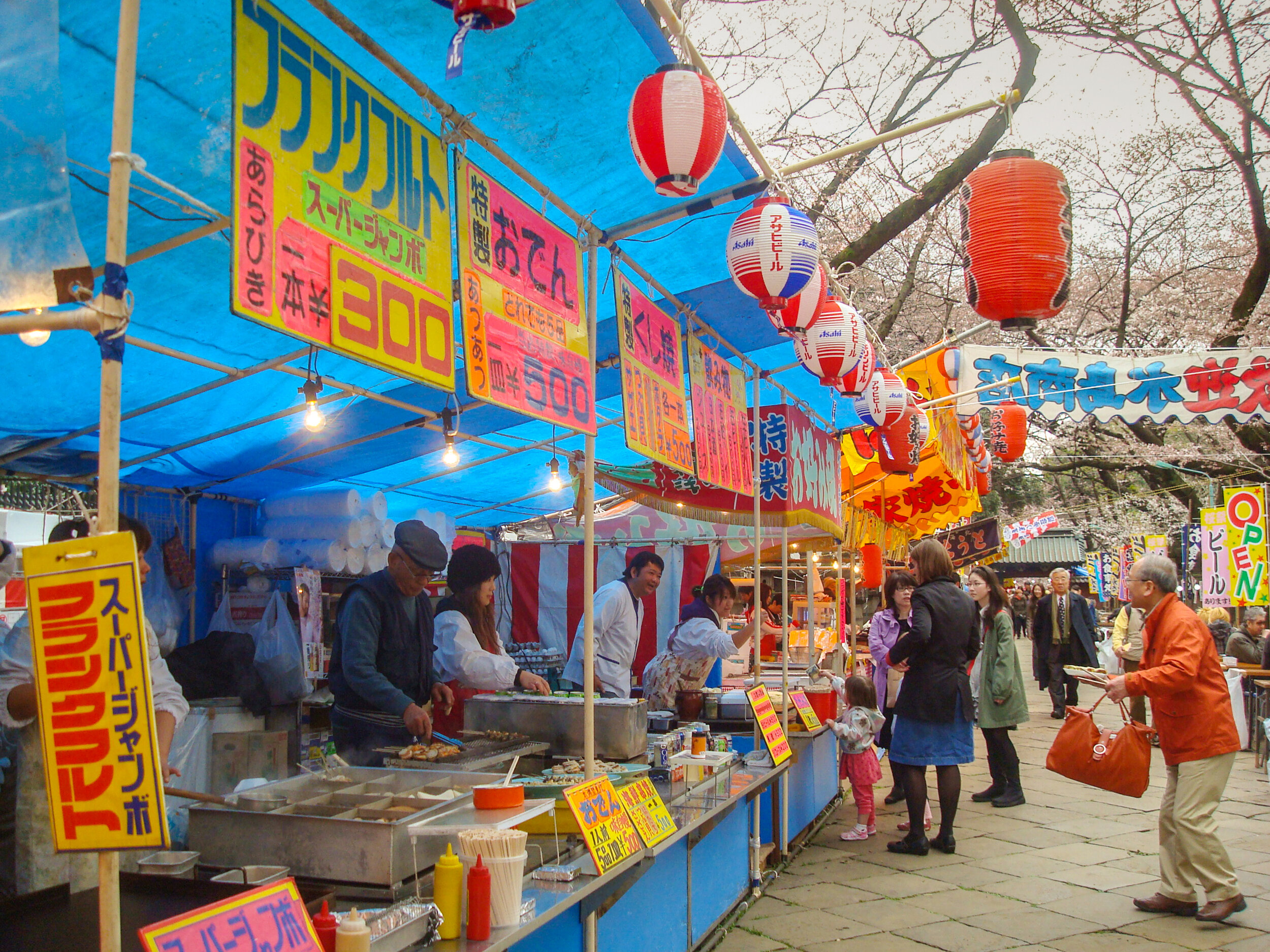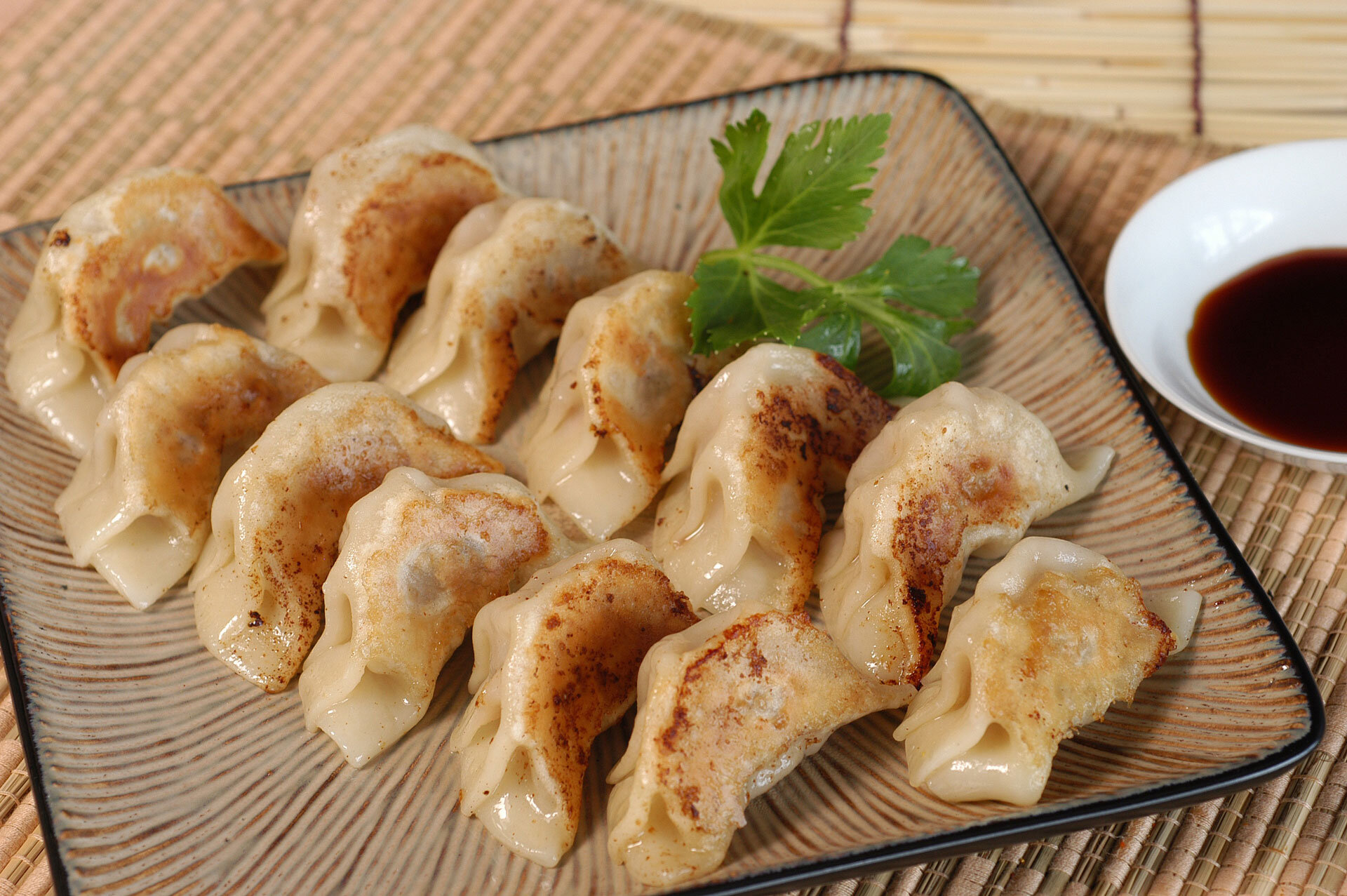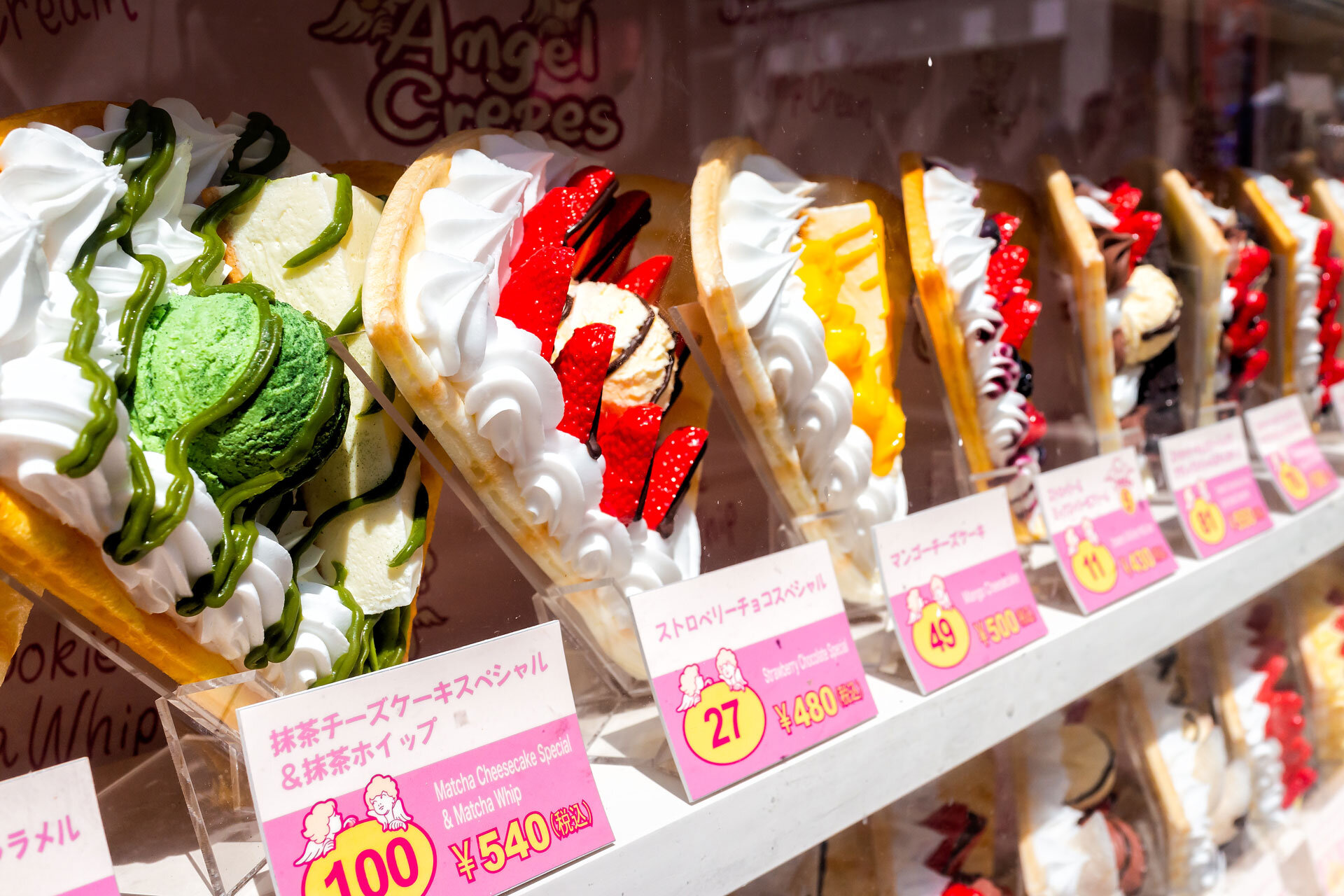Top 10 Japanese Street Foods in Tokyo
Japanese Street Food Culture:
Japan has a long and extensive history of food with every region in the country claiming at least one food product or dish as their own. From the dairy products of Hokkaido, to the apples of Aomori and the ramen of Fukuoka, there is a huge variety of top quality food available to try in Japan.
Amazing Japanese street food is no exception to this, and is an ingrained part of the Japanese food culture.
Any summer festival, new years celebration, or traditional day of celebration will have the streets of Tokyo lined with stalls of delicious Japanese street food.
The thing that is perhaps most surprising about the street food in Tokyo is that some of the most popular dishes are traditional Japanese specialties from other regions. Which ones should you try? Use our list of Top 10 Japanese street foods and try as many as you can while you’re out seeing the sights of Tokyo.
Japanese street food at a Tokyo festival.
Top 10 Japanese Street Foods in Tokyo
Take lots of photos! We have the best street food captions for you!
1. Okonomiyaki (お好み焼き)—Japanese Street Food From Osaka
Okonomiyaki is a dish originating from Osaka, often referred to as the ‘kitchen of Japan’ for its range of delicious foods that are more iconic than some Japanese landmarks.
Okonomiyaki is best described as a mix between an omelet and a savory pancake, and are available as a street food in Tokyo all day long.
Using an egg-based batter, the pancake has multiple toppings or fillings added into it while cooking. These can range from various meats and seafood, to vegetables, to cheese and mochi.
One of the best parts of okonomiyaki is that these fillings are usually customizable, meaning you can mix and match to create the ideal okonomiyaki.
When the okonomiyaki is fully cooked, it is topped with okonomiyaki sauce (similar in taste to Worcestershire sauce), mayonnaise, bonito flakes, and finally dried seaweed.
Okonomiyaki is a very filling dish and is often referred to as ‘soul food’ of Japan.
There is also a variation on okonomiyaki from Hiroshima which includes noodles in the pancake cooking. This has given rise to one of the greatest debates across the country; which is better, Hiroshima okonomiyaki or Osaka okonomiyaki? Try both of these Japanese street foods for yourself and lend your voice to the debate.
2. Takoyaki (たこ焼き)—Popular Street Food in Tokyo
Takoyaki is another signature dish from the food capital of Osaka. Takoyaki, often translated into English as octopus balls, are small balls of dough filled with octopus and various other fillings, and cooked in a specialized pan. Takoyaki has been a popular Japanese street food in Kansai for decades and has spread to various areas of Japan over time. They are regularly served in a paper boat with the same Worcestershire-like sauce as okonomiyaki, mayonnaise, dried bonito, and dried seaweed.
Ordering at a takoyaki stand can be an amazing experience in itself as the chefs flip multiple takoyaki within seconds with no more than a chopstick. It is a true show of their skill and experience. While octopus is the traditional filling for takoyaki, there are many street food stalls which offer a variety of fillings, including other seafoods, tempura, spring onions and ginger.
3. Gyoza (餃子)—Famous Japanese Dumplings
Gyoza are one of the most widely available and ubiquitous street foods in Tokyo and Japan alike.
Always popular, always well-cooked, and easy to eat, it is no surprise that they have stood the test of time. Originating from Chinese dumplings, gyoza have been around in Japan for centuries.
However, the Japanese dumplings differs from those in Chinese cuisine in that the wrapper is often thinner and the garlic flavor is often stronger and more pronounced.
The most common filling is a pork mince, chives, garlic, and cabbage mix, and in many cases where the filling is not specified, it will be this standard mixture. However, it is also possible to find chicken, beef, or duck gyoza.
They are regularly served with a soy sauce, rice vinegar and chili oil mixed sauce.
One of Japan’s most popular dumpling chains, serving not only gyoza but pork buns and Chinese dumplings, Horai 551, is so widely-loved that Japanese people will often buy gifts from their stalls for family when on a short holiday or business trip.
4. Harajuku crepes (原宿クレープ)—Trendy Tokyo Street Food
While crepes may not seem to be a traditionally Japanese food, they have skyrocketed in popularity since first being introduced and have since taken on their own part of the Japanese street food cultural landscape.
Since their first appearance in Harajuku, the center of pop culture and Japanese youth culture, this trendy Tokyo street food has become synonymous with the area.
Harajuku has been home to a number of ‘trendy foods’ over the years but crepes have been the most long-lasting and fit perfectly into the ‘kawaii’ atmosphere.
There are both sweet and savory crepes available, but sweet are the more popular street food in Tokyo.
Usually there is some combination of fruits, like strawberry or banana, a whipped cream or custard, and a chocolate or strawberry sauce.
Simply walking down Takeshita Street, the main street of Harajuku, will bring you to many crepe stands. Some of the most popular are Angel’s Heart Crepes and Santa Monica Crepes.
For some ideas of what else to do in Harajuku, check out this great Tokyo itinerary.
5. Dango (団子)—Japanese Sweet Treat
Dango are a form of small, sweet dumpling served on a skewer like many other street foods in Tokyo.
This Japanese sweet treat is often comparable to mochi, but the method of preparation is different and so the final taste and texture is a little different. The chewy texture is quite unique to this form of Japanese rice-based sweet and matches well with Japanese green tea.
There are a number of types and flavors of dango but the most common is a plain dango brushed with a soy, sugar, and starch syrup.
One of the most popular flavors in Japanese sweets, and so among dango also, is anko or red bean paste. Dango with a red bean paste layered on are a very popular sweet year-round.
One of the most aesthetically pleasing and perhaps the most famous outside of Japan, is the spring hanami dango. This style of dango layers three balls in three colors (pink, green and white) on the skewer and has become representative of springtime in Japan.
As the colors are supposed to represent the colors of the blooming cherry blossoms, it is common to eat hanami dango while enjoying a picnic or walk under the cherry blossoms.
6. Ikayaki (イカ焼き)—Japanese Festival Food
Ikayaki is a simple Japanese street food dish of grilled squid.
It is very popular at street festivals in Tokyo due to the simplicity in its cooking and ease of eating while still enjoying the festival.
This Japanese festival food is cooked and served with an array of common Japanese seasonings, including soy sauce and miso paste. It can be served in a variety of ways, with the most common way at festivals being on a skewer. Another popular serving method is to have the squid cut into rings.
Osaka has developed its own variety of ikayaki. If you order ikayaki while visiting Osaka, you will usually receive the squid sandwiched in a crepe and further grilled. This variation is often served with the okonomiyaki sauce and bonito flakes that are so popular in Osaka cuisine.
Whether you go for the more simple festival skewer variety or the more elaborate but equally delicious Osaka pancake type, ikayaki is a great street food to experience while visiting Japan.
7. Yakitori (焼き鳥)
Yakitori is perhaps one of the most popular foods in Japan and is found everywhere from the hot food counter of convenience stores to izakaya restaurants to festival market stalls.
It consists of grilled chicken on skewers, usually with a marinade. While this may sound basic, there is a huge variety in yakitori with options of different chicken parts, different seasonings, and vegetable options.
The most popular types of yakitori are chicken thigh, chicken breast, chicken skin or chicken thigh and leek. However, most places also offer chicken liver, chicken cartilage, and chicken heart among others.
It is also common to find mushroom skewers to alternate with the meat. Yakitori is one of Japan’s go-to meals year-round and is a great option for street food in Tokyo when visiting the local markets.
8. Tamagoyaki (玉子焼き)
Tamagoyaki is a common addition to many Japanese meals. It is a type of Japanese rolled omelet which is usually cut into small rectangular slices.
The egg is soft, light, and fluffy in texture. It is made by slowly frying very thin layers of egg and rolling them before they finish frying.
This is done slowly and continuously until the result is a thick log which can then be used as needed.
Often soy sauce, sugar, or dashi are added to the layers to develop the flavor further. Tamagoyaki is common topping for sushi, especially as a starter or for children.
However, tamagoyaki truly shines as a street market food where there are stalls that specialise exclusively in tamagoyaki. Tsukiji Fish Market in Tokyo has a number of stalls offering perfect tamagoyaki.
9. Kakigori (かき氷)
Kakigori is an often under-rated dish on Japanese street food lists as it can be simply described as ‘shaved ice’.
However, it is one of the best dishes to be found at the summer festivals and truly contributes to the festival atmosphere.
Kakigori consists of traditional shaved ice and syrup but has recently been taken to new heights with the addition of ingredients like condensed milk, red bean paste, and matcha.
Fruits are also a popular addition to kakigori.
There are now even entire cafes dedicated to serving different varieties of kakigori all throughout the year, despite originally being a ‘summer food’.
Many people in Japan see kakigori as a symbol of summer, and the fun of summer festivals but it is slowly becoming a popular dessert or street food in Tokyo regardless of the season.
When looking for more seasonal aspects of Japan, we have this guide.
10. Yakiimo (焼いも)
Yakiimo is roasted sweet potato, regularly sold and enjoyed in the colder months as a Japanese street food.
It is common to see trucks in Tokyo selling yakiimo circulating through the neighborhoods in late Autumn.
There are a few varieties of yakiimo, but all use very little seasoning and rely on the rich flavor of the sweet potato. Japanese sweet potatoes are generally a lot sweeter than American sweet potatoes with a rich, nutty flavor.
This street food in Tokyo is cooked to perfection over hot stones and are a perfect hand warmer when wandering around a winter festival or celebration.
While yakiimo are sold everywhere, including in supermarkets, the best come from the neighborhood trucks or at Tokyo market stalls.
As they are independent businesses, they will often have a personal specialty which can make the snack even better.
Final Thoughts on Japanese Street Food:
There is a huge variety of street food in Japan, from sweet desserts to full meals, and you can find it all in Tokyo.
When visiting Japan, going to a food market, like Tsukiji in Tokyo, seeing a festival, like Gion Festival in July in Kyoto, or taking part in a local celebration are all highly recommended activities. And the one thing that ties these activities all together is the amazing Japanese street food served at the stalls that line the streets.
About the Authors
We’re Kris & Sylvia, passionate travelers who love the freedom they get from traveling independently across our beautiful planet. For us traveling is all about the experiences. We share no-nonsense travel tips, inspiring travel stories and ready-to-use travel itineraries to some of the most iconic places.
Find Kris & Sylvia online: Wapiti Travel - Travel Your Way, Facebook, and Pinterest














